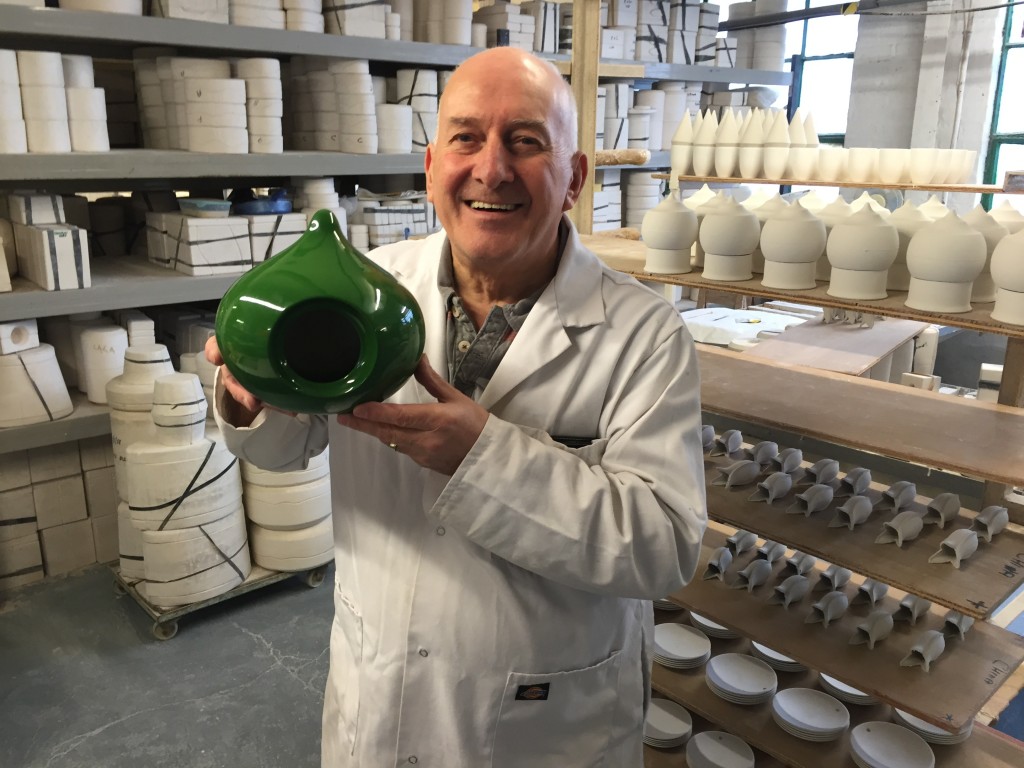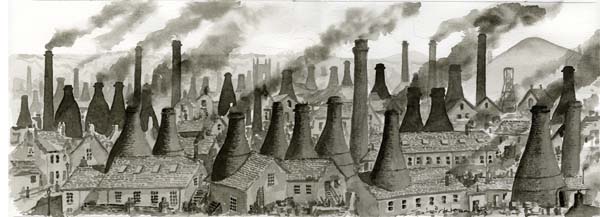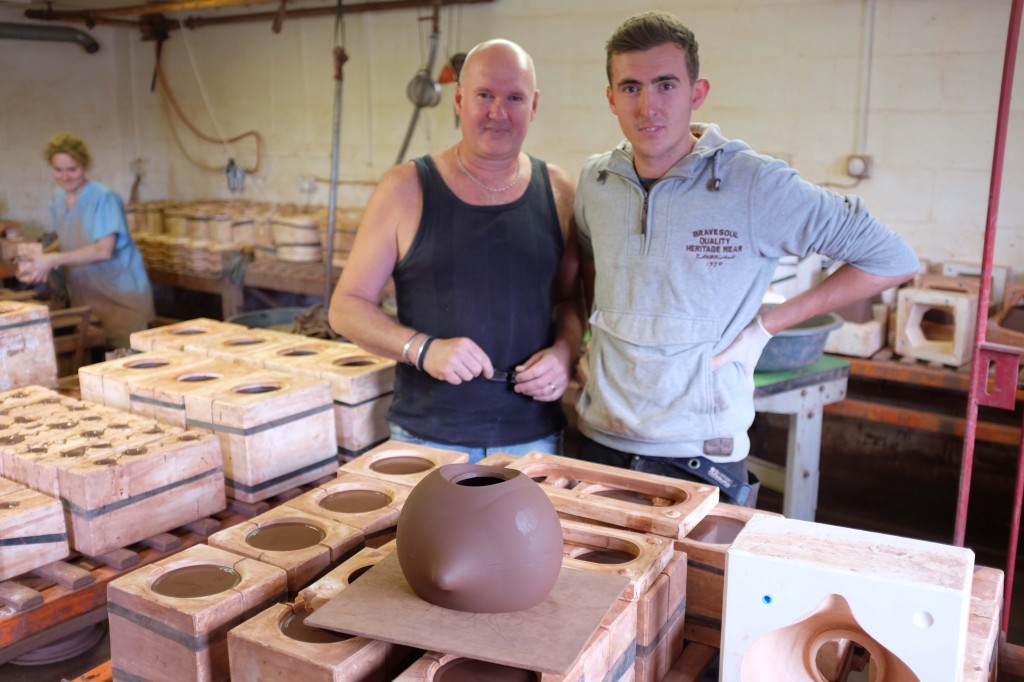
Our beepalaces are handmade in Stoke, once at the heart of the industrial revolution and pottery production. According to Stoke’s newspaper, The Sentinel, the number of people now working in the pottery industry in the UK is around 8,000 – down from 50,000 people working in Stoke-on-Trent’s pottery factories in the 1970s. Whilst we’re unlikely to ever see those kind of numbers again, Stoke has recently retooled its kilns (Emma Bridgewater’s factory is also in the area) and we’re proud to be a part of the next chapter of the potteries’ story.
We’re always delighted to catch up with Brian, whose team produce our beautiful beepalaces and during our last conversation we asked him a little more about life in the potteries…
So, Brian, what have we torn you away from this afternoon?
Glazing mostly…
Tell us a little more about your factory…
Well, we have two work units, each of 3,500 square feet and we have 10 people working here.
Are you a lifelong potter?
Yeah, pretty much. I’ve been in the pottery industry for about 40 years and most of the people who work here have also worked as potters since they left school or thereafter, so yes, we’re a pretty experienced factory. We specialize in bespokeware, so we work with companies like Beepalace and each item is completely unique.

There’s been a lot written about the decline of the potteries, but it sounds like you’ve found a way to keep your business thriving – is your approach one that is common in the area?
Most of the factories that are left will take on bespoke work, but they don’t see it as the mainstream production. We are probably one of a very, very small number of people who operate solely on a bespoke basis. I worked as a senior manager for the world’s largest producers of coffee mugs where we were making 3/4 million cups a week and when they went into receivership, I tried to work for somebody else, but then decided I wanted to set up my own company.
That was during the era of major decline in the industry and it has levelled out now and is in fact doing a bit of a u-turn. A lot of the people who took their production overseas found they weren’t getting what they wanted. Of course, the problem has been that in Stoke (and the potteries generally) the infrastructure isn’t now able cope with the demand of what’s coming in because the people in the area don’t have the competence – or the cash – to inject into rebuilding the industry. Even the likes of Wedgewood have shrunk down and down to a single warehouse. But, in fairness to people like myself we’re at a situation now where the situation is quite fluid.
There’s been quite a renewed interest in British-made, artisanal products in general over the past few years – has that helped?
I think so – most of the people who have come to us are people who have tried importing and working with overseas manufacturers, but who have found it so frustrating. It’s alright, but I think things are starting to turn our way.
Tell me about the process that you go through with beepalace production…
After the design stage, we then go to get the thing modelled. It has to be a certain percentage larger than the finished product is going to be to, because it shrinks when it dries, so we have to allow for that. From here we make a block model and we can get samples made and check that the mould’s working properly and is the right size.
Once the customer approves the samples, we go on to have that block made into a case and that case is then there to make all the working moulds from. This is either made from a very hard plaster or a kind of rubber, both of which are very hard wearing.

Down the road from Brian’s pottery, a prototype is tested
Is it a poured clay construction?
It’s a slip cast, which means that we pour liquid clay into the mould, and then we allow what we call a casting time, which allows the clay to dry to a certain thickness. We then clip out the excess slip and then leave that skin on the inside of the mould to harden off and release from the mould. Once the objects are bone dry, they go into the bisque kiln for their first firing and then when they come out we move onto glazing
Which I understand is what you’ve been doing this afternoon? I’ve been watching the Throw Down [the BBC pottery TV show], so have had a little insight into how to decorate ceramics, but – as you said – the world of studio pottery is very different to the one you work in: how do you do it?
Well, for starters we’re obviously a much bigger enterprise than the Throw Down, so we’re using glazing made in bulk. They’ll be dipping pots in buckets of glaze, but yes, when you’re in production it’s a different ball game. We either dip the whole thing or we use a spray. The latter gives us a very even coating and the correct depth of colour – it’s a little more time consuming than the dip method, but you get a much more even finish.
The fact that you’re spraying it, means the glaze doesn’t run off and cause runs and other things that might not be visible until you get it in the right light.
One of the things we love about working with you is that we have a connection with the product and the process…
It is commercialized: it’s not like we’re hand-throwing everything, but ours is a traditional approach and we work with traditional methods. We’re not automated factory, where you put clay into a machine one end and it comes out the other end finished. Everything we make is handmade and each piece is unique in its own way because of that.
Well, we might be a bit biased, but we think this process works beautifully for our beepalaces – thanks, Brian!




